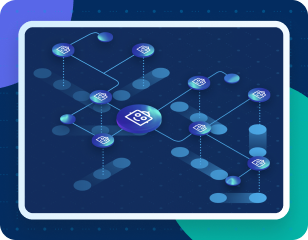Search Results for: Intro to Data Integration Patterns
Intro to Data Integration Patterns – Aggregation
In this post I want to close the loop on introducing you to the last of the five initial patterns that we are basing our Anypoint Templates on. I’m sure we’ll continue creating templates and we’re going to continue discovering new data integration patterns. If you are just entering at this post, I would recommend […]
Intro to Data Integration Patterns – Correlation
So far, in this series, we have covered Migration, Broadcast, Bi-Directional Sync, and today we are going to cover a new integration pattern: Correlation. In an effort to avoid repeating myself, for those who are reading through the whole series, I will omit a lot of relevant information which is shared between the patterns that […]
Intro to Data Integration Patterns – Bi-Directional Sync
In this post I will continue talking about the various integration patterns that we used as the basis for our Anypoint Templates. The next pattern to discuss is bi-directional sync. Since bi-directional sync can be also accomplished as two, 1:1 broadcast applications combined and pointed in opposite directions, I would recommend reading my last post […]
Intro to Data Integration Patterns – Broadcast
In my post yesterday, we did a brief introduction to the migration pattern. Today we are going to do a similar overview of the broadcast pattern which is a kinetic version of the migration pattern. Pattern 2: Broadcast What is it? Broadcast can also be called “one way sync from one to many”, and it […]
Intro to Data Integration Patterns – Migration
Hi all, in this post I wanted to introduce you to how we are thinking about integration patterns at MuleSoft. Patterns are the most logical sequences of steps to solving a generic problem. Like a hiking trail, patterns are discovered and established based on use. Patterns always come in degrees of perfection with much room […]
Introducing Two Powerful MCP Tools: Platform Insights and Reuse Metrics
We’re excited to announce two new capabilities in the Model Context Protocol (MCP) toolset that give you unprecedented visibility into your platform usage and asset efficiency: Platform Insights and Reuse Metrics. Platform Insights Platform Insights is your one-stop solution for understanding how APIs, flows, and integrations are performing and being consumed. It offers a unified, […]
Scaling Workday Integrations With MuleSoft: A Guide to Parallel Pagination
Discover expert strategies for optimizing Workday API integrations with MuleSoft, focusing on enhancing performance and scalability. It covers essential techniques such as parallel pagination, efficient filtering, and response time management to ensure fast, reliable integrations, especially with large datasets.
Architectural Patterns for the Agentic Era
In the “agentic era,” AI agents now initiate actions, moving beyond simple assistance. This necessitates new architectural patterns that build upon existing composable foundations, allowing for autonomous reasoning and dynamic execution within enterprise systems.
MCP: Bringing Standardization to the AI Integration Landscape
As AI continues to reshape how we build, scale, and use software, we’re witnessing the emergence of new architectural patterns designed specifically for the age of large language models (LLMs) and autonomous agents. One of the most promising developments in this space is the Model Context Protocol (MCP), a standardized approach to how AI systems […]
Introducing Anypoint MQ and Object Store V2 in Anypoint Usage Report
MuleSoft’s Anypoint Usage Report now includes detailed visibility for Anypoint MQ and Object Store, allowing customers to monitor, analyze, and manage usage for better operational and financial decisions. Users can access historical trends and programmatic data across all deployments.




